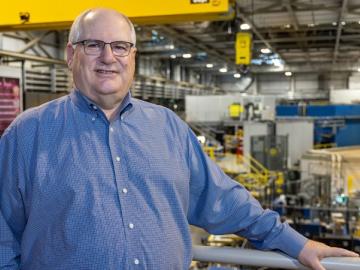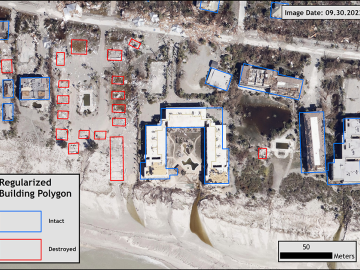
Filter News
Area of Research
- (-) National Security (36)
- (-) Neutron Science (124)
- Advanced Manufacturing (5)
- Biology and Environment (29)
- Computational Biology (1)
- Computational Engineering (1)
- Computer Science (7)
- Electricity and Smart Grid (1)
- Energy Science (51)
- Functional Materials for Energy (1)
- Fusion and Fission (5)
- Isotope Development and Production (1)
- Isotopes (27)
- Materials (105)
- Materials for Computing (15)
- Nuclear Science and Technology (15)
- Quantum information Science (4)
- Supercomputing (63)
News Topics
- (-) Big Data (8)
- (-) Cybersecurity (19)
- (-) Machine Learning (15)
- (-) Microscopy (3)
- (-) Neutron Science (120)
- (-) Physics (10)
- (-) Polymers (1)
- (-) Space Exploration (3)
- 3-D Printing/Advanced Manufacturing (8)
- Advanced Reactors (2)
- Artificial Intelligence (18)
- Bioenergy (10)
- Biology (11)
- Biomedical (16)
- Biotechnology (2)
- Buildings (1)
- Chemical Sciences (5)
- Clean Water (2)
- Composites (1)
- Computer Science (31)
- Coronavirus (12)
- Energy Storage (8)
- Environment (13)
- Exascale Computing (1)
- Fossil Energy (1)
- Frontier (2)
- Fusion (2)
- Grid (6)
- High-Performance Computing (6)
- Hydropower (1)
- Materials (16)
- Materials Science (24)
- Mathematics (1)
- Nanotechnology (11)
- National Security (35)
- Nuclear Energy (7)
- Partnerships (5)
- Quantum Computing (1)
- Quantum Science (8)
- Security (12)
- Simulation (1)
- Summit (7)
- Transportation (7)
Media Contacts

The truth is neutron scattering is not important, according to Steve Nagler. The knowledge gained from using it is what’s important

Paul Langan will join ORNL in the spring as associate laboratory director for the Biological and Environmental Systems Science Directorate.

While studying how bio-inspired materials might inform the design of next-generation computers, scientists at ORNL achieved a first-of-its-kind result that could have big implications for both edge computing and human health.

Although blockchain is best known for securing digital currency payments, researchers at the Department of Energy’s Oak Ridge National Laboratory are using it to track a different kind of exchange: It’s the first time blockchain has ever been used to validate communication among devices on the electric grid.

Neutron scattering techniques were used as part of a study of a novel nanoreactor material that grows crystalline hydrogen clathrates, or HCs, capable of storing hydrogen.

Nine student physicists and engineers from the #1-ranked Nuclear Engineering and Radiological Sciences Program at the University of Michigan, or UM, attended a scintillation detector workshop at Oak Ridge National Laboratory Oct. 10-13.

Having lived on three continents spanning the world’s four hemispheres, Philipe Ambrozio Dias understands the difficulties of moving to a new place.

Laboratory Director Thomas Zacharia presented five Director’s Awards during Saturday night's annual Awards Night event hosted by UT-Battelle, which manages ORNL for the Department of Energy.

Over the past seven years, researchers in ORNL’s Geospatial Science and Human Security Division have mapped and characterized all structures within the United States and its territories to aid FEMA in its response to disasters. This dataset provides a consistent, nationwide accounting of the buildings where people reside and work.

Scientists at ORNL used neutron scattering to determine whether a specific material’s atomic structure could host a novel state of matter called a spiral spin liquid.


